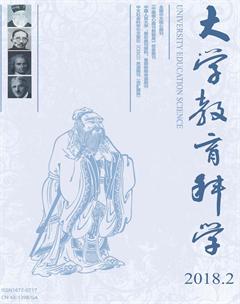From Maternalistic Education to Public Spirit Cultivation
MAORong
Abstract: The implementation of university academy system, is to rectify the tendency of colleges in modern universities to simply emphasize professional education and ignore other aspects of education through a new organizational structure that embodies the all-round concerns of the school to the students and is more conducive to promoting the overall development of students, in which colleges are responsible for professional education and academies play the role of life education. Its starting point may be like this, as some university presidents have said: “if the college is the father, the academy, then the mother. ”But some students think that “although the college and the academy are father and mother, but they got divorced.”
After the implementation of university academy system, why do students feel "separation between college and academy"? The reason is the conflicts that arise in the job division into a dual system of the college responsible for student management and the academy providing the service system, where originally the college played the double roles. These conflicts include the conflict of responsibilities of the dual organizations, the time conflict of activities launched by both the college and the academy, the behavioral conflict of the double standards of the both authorities, and the emotional conflict of belongings to both the college and the academy, etc. In order to avoid the separation between the college and the academy, it is necessary to carry out a flexible job division between the college and the academy, strengthen the communication and coordination between them, pay attention to the appropriateness of activities launched by the academy and to continuously improve student service of the academy.
The implementation of university academy system also aims at helping freshmen better adapt themselves to the university life as they are relatively weak in self-reliance, self-discipline and self-control. This problem, to some extent, is due to family education with extreme maternal love and the lacking of public spirit cultivation on the part of school education. Today, the ideological and political education of our universities is facing the problem of how to compensate for this lack. If the academy only plays the "mother" role, it is difficult to complete this task of cultivating public spirit, because we cannot make up for the lack of public spirit it by the maternalistic nurturing which just lacks it.
The cultivation of public spirit requires certain public life practice. The collective living environment of the academy provides some public space for student individuals, so that students can get more social interaction, which can be regarded as an experimental garden of public life. Whether for the cultivation of students public spirit, or for the practical functions of the university academy system, the role of academy should be a student community.
In order to enable the academy to play the role of developing a community that can effectively cultivate students' public spirit, we need to adhere to the principle of Common governance, Joint construction and Sharing in the activities of academies.
Common governance means that we should make full use of the role of students' self education and self management, enable students to participate in the academy management more widely, and make the rules and regulations in academies really become the common contracts of students of the academy, so that students become self-disciplined from originally being heteronomous.
Joint construction requires paying attention to common aspirations and common interest for students, as far as possible to mobilize the enthusiasm of the students to participate in the activities of the academy, especially the cultural construction of the academy, so that common understanding formed by their joint participation in the academy activities was condensed into a common concept of life.
Sharing calls for attention to the development of public service resources shared by the Academy, including the necessary public spaces, facilities and funds, so that all the students in the academy may benefit from the public service resources of the academy, and enhance their collective sense of belonging, but also create more public spaces for the academy. Meanwhile more public spaces can increase students interaction, and also enhance their concern for the public interest.
Key Words: modern university; university academy system; educational idea; maternalistic education; public spirit; life community

